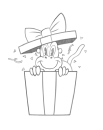$163.94
$218
You save $54.06
DOWNLOADS
double-split-complementary-palette-basics.mp4
1 GB
double-split-complementary-palette-basics-transcript-english.txt
44 kB
double-split-complementary-palette-basics-transcript-spanish.txt
47 kB
double-split-complementary-palette-basics-captions-english.srt
72 kB
double-split-complementary-palette-basics-captions-spanish.srt
79 kB
COMMENTS
Let’s take a look at how using a double split complementary palette can help simplify color choices to ensure a cohesive, colorful painting without being overwhelmed by too many hues.
First decide on the light source's temperature and its complementary shadow color. Choose two colors for light and two for shadow. Then block in local colors and shadows, ensuring color harmony throughout. Use blending modes and soft edges to integrate colors smoothly, and refine details like ambient occlusion and highlights.
Marco Bucci’s color demos and lessons have single handedly saved my paintings. I can’t wait to try out the assignments
The demo and the example Marco created in it look amazing. I never knew a limited palette could produce such a fun work. I want to master it, but I feel it would take 10 years or more.
I'll post assignments this weekend.













